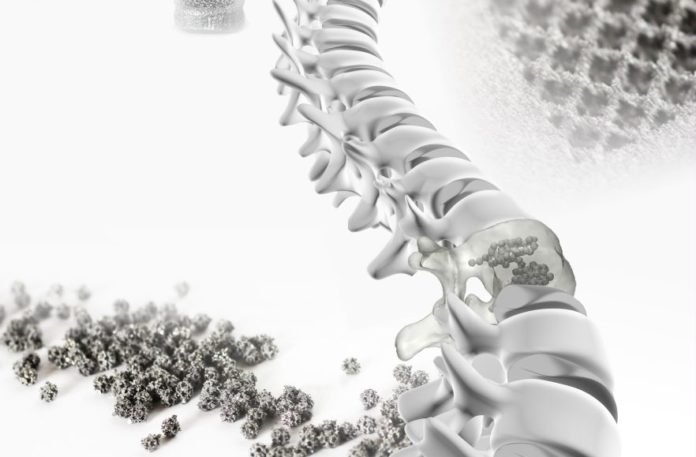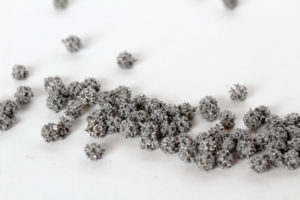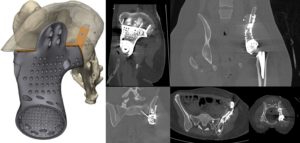
Until just a few years ago, only standardized, conventionally manufactured prostheses – or in very limited cases customized prostheses – were available for patients with bone tumors. Today, a combination of additive manufacturing and CT imaging makes it possible to create truly customized prostheses. At the cutting edge of this technology is MT Ortho, based on the Italian island of Sicily.
Building on two-decades experience in the Italian clinical-hospital market for standardized prostheses, MT Ortho started to embrace additive manufacturing in 2014. That year also marked a series of arrivals at the company, a recent graduate engineer, Simone Di Bella, who had specialized in additive manufacturing and two GE Additive Arcam Electron Beam Melting (EBM) machines.
“Our goal was to become not only a distributor but also a manufacturer of medical devices. And our vision was to achieve this by creating new, innovative devices with unique features that were only possible by using additive manufacturing and were more compatible with the human bone than metals on the market at the time,” explains Di Bella.
The team at MT Ortho initially focused on the production of customized prostheses, for neurosurgical applications (custom cranioplasty) and oncological orthopedics (mega-prostheses reconstruction). At the same time, the company launched several projects to obtain the European CE mark for several devices in neurosurgery.
One of these projects includes ground-breaking work to develop an innovative kyphoplasty implant for the treatment of vertebral collapse. According to the press statement, this device will make it possible to replace current bone fillers, such as cement and bio-cements, with an osteoinductive material eliminating all possible negative effects related to the current technology in use.
Diagnostic imaging and design for additive
Combining diagnostic imaging technologies with the design freedom of additive manufacturing has opened up new prosthetics opportunities, enabling customized patient devices and improving the effectiveness of diagnosis, planning, surgery, and clinical outcomes.
Customized prostheses are medical devices exclusively designed for an individual patient, to adapt to their particular pathology, and then manufactured according to their specific diagnostic images.
This type of implant is mainly used when bone geometry is not within the dimensional range of standard implants when there are special requirements for disease or when a tailor-made solution enables a better clinical result.
For the successful use of the customized prostheses, the inter professional cooperation and communication between the orthopedic surgeon and the implant designer are key.
The implant designer may not be familiar with anatomopathological, epidemiological, surgical, or resection or reconstruction procedures. While, the orthopedic surgeon may not have an in-depth understanding of the process of producing a physical additively manufactured model.
Driving advances in cranioplasty
Leveraging its experience distributing a wide range of medical-surgical devices to hospitals, public and private healthcare facilities and now with additive technologies, MT Ortho has continued to develop innovative solutions for orthopedic surgery, oncological orthopedics, neurosurgery and maxillofacial surgery – all sectors whose needs often cannot be met by conventional manufacturing methods.

This has led, to the development of a new line of customized cranioplasty prostheses, now in use throughout Europe. The use of additive technology in cranioplasty makes the prosthetics process more comfortable and much more precise. In addition, the characteristics of the technology make it possible to achieve an optimal structure for osseointegration.
The press release also states that by the technology’s speed and precision, it is also much easier today to carry out the so-called demolition or reconstruction operations of cranioplasty in a single step.

These interventions are based on a completely different surgical strategy that allows the most precise planning of the intervention. MT Ortho provides not only the prosthesis but also the cutting templates – following the precise mapping of the intervention area by a CT scan.
In surgery, the removal of the area affected by disease and the insertion of the cranial prosthesis can simultaneously reduce post-operative hospitalization and recovery time and the risk of infection. This is particularly important for interventions in sensitive areas such as the ocular orbit or the cranio-maxillofacial region.
Additive manufacture of customized prostheses
To develop customized prostheses, it is necessary to go through a series of steps (Fig. 1).

From the outset, this process requires close cooperation between the surgeon responsible for the procedure and MT Ortho’s engineering team.
- The first step is a CT scan to make it possible to build a 3D model of the specific anatomical characteristics of the patient.
- A conference call is then held with the doctor, where the intervention is discussed, and access routes identified.
- Designers then determine the characteristics of the fixing systems, considering the resistance of the material.
- The prosthesis is designed and then reviewed with the surgeon, for all aspects of feasibility.
- Finally, the prosthesis is printed, often with a backup copy, to support any unexpected events or problems. The prosthesis usually does not require any particular post-treatment other than washing and final sterilization, which can occur at the source or in an autoclave at the destination hospital.
- MT Ortho product specialists are sometimes present in the operating room during surgery and assist the surgeon with proper positioning.
Bespoke solutions for bone cancer patients
Bone cancer is one application area where additive manufacturing can offer advantages, especially when combined with digital image processing and artificial intelligence technologies, making it possible to prepare a 3D intervention plan through the fusion of several CT images.
Additive technology’s full design freedom allows for the manufacture of customized prostheses that consider deformation and the need to distribute loads adequately.
One specialist area of expertise developed by MT Ortho is cancer prosthetics, for bone sarcomas or chondrosarcomas.
Using additive technologies, it is possible to reconstruct patients’ bone anatomy after demolition surgery performed for the removal of a tumor.
This area of expertise has been particularly successful thanks to a collaboration with the Department of Oncological Orthopedics at the National Cancer Institute Regina Elena of Rome (IRE) in Rome, where MT Ortho is achieving encouraging intervention results. This collaboration leads the company to expand its services further to include surgical aids, such as cutting guides and precision positioning of prostheses.
Cost considerations
Another aspect that will drive the further growth of customized prostheses is cost. A study conducted in New Zealand compared the overall costs in the case of hip arthroplasty between standardized and customized prostheses.
Considering the shorter hospitalization times and more effective results, the study showed an overall cost saving of 13% when customized prostheses were used in the field of oncology.
Since the study assumed an average post-operative stay of four to five days in the case of customized prostheses, compared to an average of seven to 10 days in the case of standardized prostheses, not to mention the need to have a large stock of sizes and materials.
And given that hospitalization is one of the significant cost burdens in the healthcare system, if the time savings for theatre and operating personnel are added, the final budget is decisively favorable to customized prostheses.






